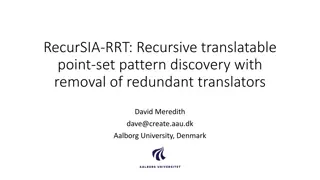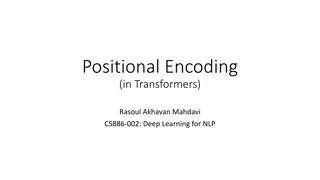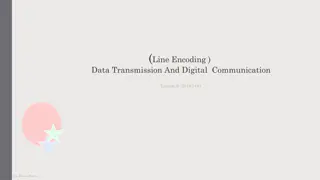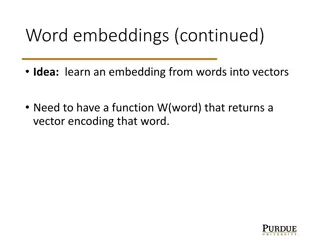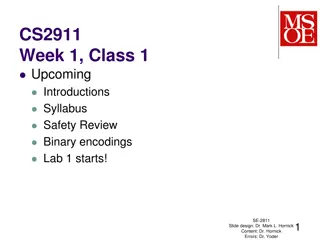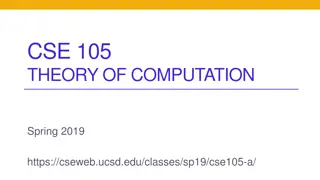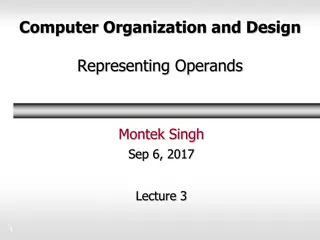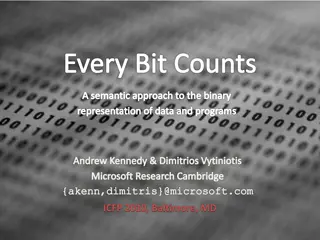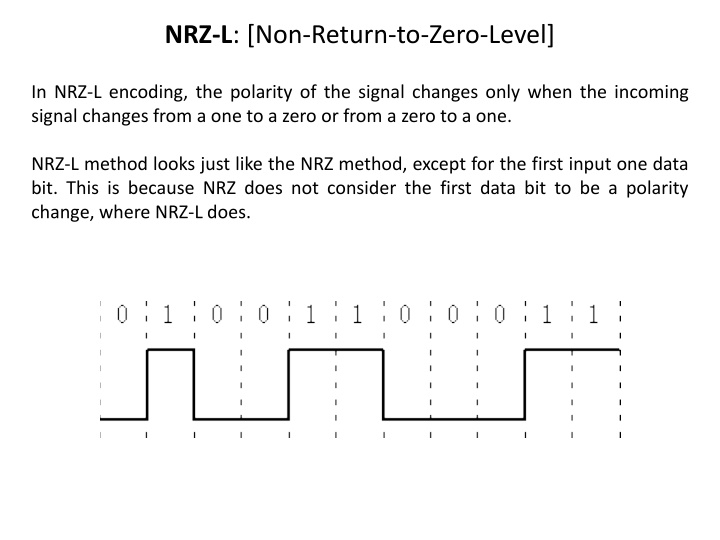
Understanding Various Signal Encoding Techniques
Explore different signal encoding techniques such as NRZ-L, NRZI, Bipolar-AMI, Manchester, and Differential encoding. Learn how each method handles data representation and transitions for reliable data communication.
Download Presentation

Please find below an Image/Link to download the presentation.
The content on the website is provided AS IS for your information and personal use only. It may not be sold, licensed, or shared on other websites without obtaining consent from the author. If you encounter any issues during the download, it is possible that the publisher has removed the file from their server.
You are allowed to download the files provided on this website for personal or commercial use, subject to the condition that they are used lawfully. All files are the property of their respective owners.
The content on the website is provided AS IS for your information and personal use only. It may not be sold, licensed, or shared on other websites without obtaining consent from the author.
E N D
Presentation Transcript
NRZ-L: [Non-Return-to-Zero-Level] In NRZ-L encoding, the polarity of the signal changes only when the incoming signal changes from a one to a zero or from a zero to a one. NRZ-L method looks just like the NRZ method, except for the first input one data bit. This is because NRZ does not consider the first data bit to be a polarity change, where NRZ-L does.
NRZI [Non-Return-to-Zero-Inverted Encoding] A '0' is encoded as no change in the level. However a '1' is encoded depending on the current state of the line. If the current state is '0' [low] the '1' will be encoded as a high, if the current state is '1' [high] the '1' will be encoded as a low. Used with FDDI and USB for example.
Bipolar-AMI Signal Encoding A multilevel binary approach in which binary 0 is represented by a lack of pulse, and a binary 1 is represented by a positive or a negative pulse. The binary 1 pulses must alternate in polarity. Each 1 introduces a transition that can be used for synchronization
Manchester Signal Encoding Manchester encoding is a biphase encoding in which the transition takes place in the middle of the bit period: a low-to-high transition for 1, and a high-to-low transition for 0.
Differential Signal Encoding A biphase encoding in which transition at the start of the bit period represents 0, and a lack of transition at the start of the bit represents 1. In addition, a transition occurs at the middle of each bit period just for the purpose of clocking.

